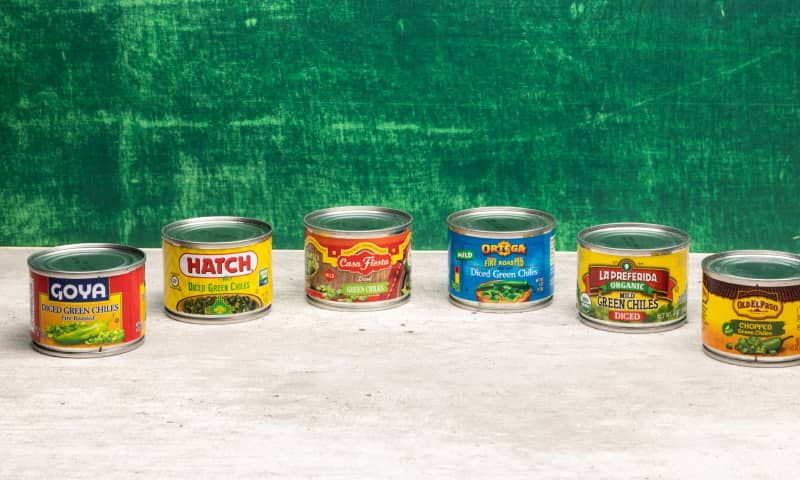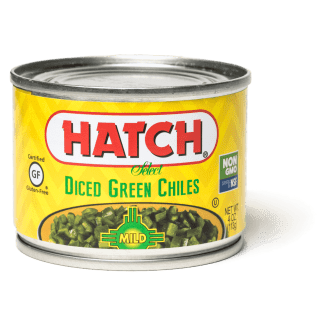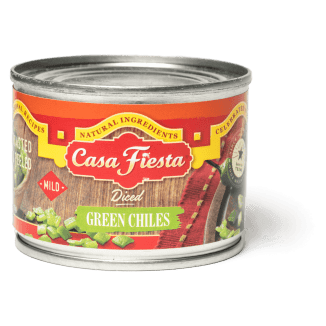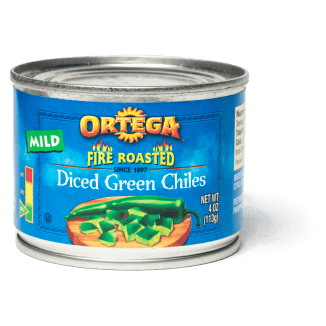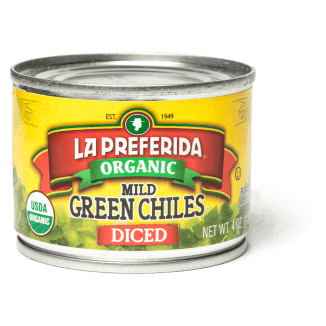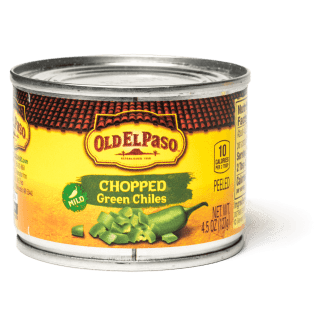Canned green chiles are an inexpensive and convenient way to add a burst of flavor to foods, which makes them a pantry staple for some folks. We like to use this versatile ingredient in all kinds of dishes, including Artichoke–Green Chile Dip, Green Chile–Cilantro Pesto Sauce, Cornmeal Drop Biscuits with Green Chiles, Smokin’ Mac ’n’ Cheese, and Cast Iron Green Chile Cheeseburger Sliders.
We rounded up six nationally available products priced from about $0.22 to about $0.50 per ounce and tasted each one plain and in Green Chile and Cilantro White Bean Dip. Canned green chiles are available whole and diced; we selected diced (one product was labeled “chopped”) because that’s what we most frequently use in recipes. Two brands offered two different heat levels, “mild” and “hot.” In those cases we selected “mild” because “hot” varieties had added “natural flavor,” which one company confirmed was a heat extract. We wanted products without added flavoring so we could better focus on the flavor of the chiles. And even though some products were labeled “mild,” heat levels didn’t always correspond with the labels—which ended up being a great thing.

We Liked Heat
The heat levels in the chiles we tasted varied widely. Three of the products were on the milder side. We still liked them, but our favorite canned green chiles, by contrast, had a “good amount of heat” and a “pronounced zing”; one taster noted that our winner was “by far the spiciest” with its “full-flavored peppery taste.” None of the products included any additional ingredients that would make the chiles taste hotter, so we did a little digging (see “Chile Roulette”).
Chile Roulette
Perhaps unsurprisingly, all the canned green chiles we tasted listed either “green chiles” or “green chile peppers” as the primary ingredient. To try to understand the variation in heat levels among products, we asked companies if they would further specify chile type. While most did not, two said they use Anaheim chiles—a variety of the Capsicum annuum ‘New Mexico No. 9’ cultivar with a low to moderate heat level that ranges from 500 to 2,500 on the Scoville Heat Unit scale.
However, Danise Coon, Senior Research Specialist at New Mexico State University’s Chile Breeding Program and Chile Pepper Institute, explained that the cultivar name ‘Anaheim’ is used to describe many different green chile cultivars: “Unfortunately in the food packing industry, all green chile cultivars and varieties have been given the moniker ‘Anaheim,’ whether it is actually an ‘Anaheim’ or a ‘Big Jim,’ ‘Sandia,’ ‘6-4’ or ‘AZ20.’” In short, while all products listed green chiles in their ingredients, there may be differences in the exact variety of green chile used, which can lead to differences in flavor and heat level.
We Liked Tender Chiles With Some Structure
The textures of the chopped chiles also varied. The best products were pleasantly tender but maintained their structure. Others had issues. To make canned green chiles, the chiles are typically washed, roasted, peeled, and then canned, usually with preservatives such as calcium chloride and citric acid added. But not every company roasts its chiles, which affects the final product’s texture.
One sample was rough and uneven, notably more fibrous than our top-rated product, and testers commented on the “crunchy” texture and “hard bits.” That manufacturer confirmed that it did not roast its chiles, which may have contributed to the rougher consistency because, as our science research editor explained, roasting would reduce the fibrous texture by breaking the cell walls and dissolving the pectin. All our highly rated green chiles were roasted, which gave them a tender, even texture.

Most products also included calcium chloride in their ingredient lists, which our science research editor said increases cross-linking of the pectin in the chiles so that they stay firmer throughout processing. One product did not include calcium chloride, however, and tasters noticed that those chiles were softer than others. Another sample had some “mushy bits” as well, even though the ingredients included calcium chloride. But our science research editor explained that the heat applied during canning can also affect the chiles’ texture because canning might entail thorough cooking depending on each company’s procedure. While a softer texture wasn’t a deal breaker (and became even less of an issue when we blended the chiles into dip), overall we preferred chiles that were tender but maintained some structural integrity.
Our Favorite Canned Green Chiles: Goya Diced Green Chiles Fire Roasted
Our favorite was from Goya and cost less than $1 per can; the chiles were soft yet maintained their structure, but their heat level is what really won us over. Tasters thought it was “just right,” with a “full-flavored peppery taste.” These chiles also added a “nice little kick” to the bean dip with their “pronounced zing,” which set them apart from the rest of the lineup.
- Moderate heat level
- Tender but not mushy texture
- Taste plain
- Taste in Green Chile and Cilantro White Bean Dip
